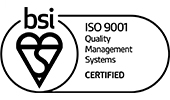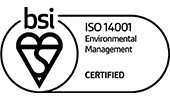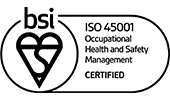Whether you are looking to refresh your current office, or move to a different one, it’s the perfect opportunity to explore if the space you work in truly reflects the culture of your business.
Creating the right culture isn’t just about having the best policies, putting marketing messages on the walls or reinforcing the company brand by painting everything the same colour as your logo, it’s also about how to create a great environment. A workspace where people will feel supported and inspired to want to do their best and an environment that mirrors the personality of the business.
Some companies, including the likes of Google, have slides between floors, hammocks for staff and egg-shaped meeting rooms. Whilst this may not be suitable for all businesses, how can you ensure that your workspace really stands out and reflects the culture that fits your company?
First, you need to consider what that culture is? Chances are that the people working within the business already display this through the way they approach their work and their individual personalities, but the common ground will be what the company wants to promote as its corporate identity, based upon its values and working practices.
Thankfully, the briefing process that you would go through when refreshing your office interiors or moving to a new one will help to highlight all of this and more, allowing you to decide the direction and the culture that you want to reflect for the future.
As already mentioned, two driving factors that can shape a company’s culture are often based upon the type of people who work for you and the way that they do their work. For instance, you’ll probably find that most people are split between those who want to concentrate in a quiet, solitary environment as opposed to those who work better in a more social setting. Equally, some tasks will call for collaboration whilst others need focus and concentration. Some people who prefer to work without distraction may find it hard to fit comfortably in a busy open plan space and people who need to move freely and collaborate may find it restrictive and won’t thrive in a cellular office situation.
What you really want is an office design that’s sensitive to each person’s preference and at the same time allows people to perform various types of work in the most effective and motivational way.
There are any number of ways you can do that and it really will depend on how you position your company culture but here are just a few ideas;
THE CULTURE OF COLLABORATION
- Open up your floor plan and create more organically inspired layouts using the desking so that people can move around freely – creating open plan offices that are full of desks laid out in a regimental fashion can be just as uninspiring to work in. An example of this is the layout we created for Peacocks where clusters of bench style desks were installed on quirky angles, thus encouraging collaboration and movement between teams.
- Don’t just have one type of collaborative space, create different areas such as waist height tables with mobile stools, standing height layout areas using storage to create the worksurface, semi enclosed soft seating areas using acoustic screens for more privacy or lounge areas. Basically don’t restrict communication between your staff to just one type of collaborative space.
- Try to resist the temptation of automatically placing staff into cellular spaces because of their job title. Here at Paramount the only person that has an office is our Managing Director, and that’s not because he wanted an office, it’s because he is so noisy and spends most of his time on the phone so we insisted he have an office! Our Directors and Managers all sit within their respective departments because this enables the business to communicate far more effectively. If they or anybody else within the company needs quiet, reflective space then we have a Quiet Room that can be used on a short term basis.
THE CULTURE OF CREATIVITY
- Facilitate brainstorming by writing on glass partitions or using whiteboard paint to create your own erasable ‘wall of ideas’, similar to what we have done in our own ShowOffice.
- Provide areas to allow employees to display inspirational ideas such as magnetic glass or pinboards that double up as acoustic panels.
THE CULTURE OF COOL (the workplayce)
- Create a funky breakout area that feels completely different to the office area so that staff are able to literally ‘break away’.
- Encourage staff well-being by installing a gym that can be used before work, during lunchtime or after work. This will not only maintain the health of your staff but it will be viewed by staff as a huge benefit if it saves them money on gym fees.
- Follow GoCompare.com’s lead and let your staff choose a theme for each room. This is an opportunity for staff to feel like their ideas are valued and adds an element of fun to the office environment.
THE CULTURE OF PRODUCTIVITY
- Invest in technology that allows people to do their jobs faster and better, like Airbus’ Touchlab; a giant iPad for virtual presentations.
- As cliché as it might sound, natural light, a well heated and cooled space and aesthetically pleasing colours really do motivate people and make them feel happier and more energetic in their job.
Good office design isn’t just about making sure that your staff are sitting comfortably, it can also affect how they carry out their work and how they communicate with each other.
When it’s done well it can create the kind of culture that will make you stand out and help to drive your business into a successful and profitable future.
Written by Helen Bartlett, Design Manager at Paramount Interiors








